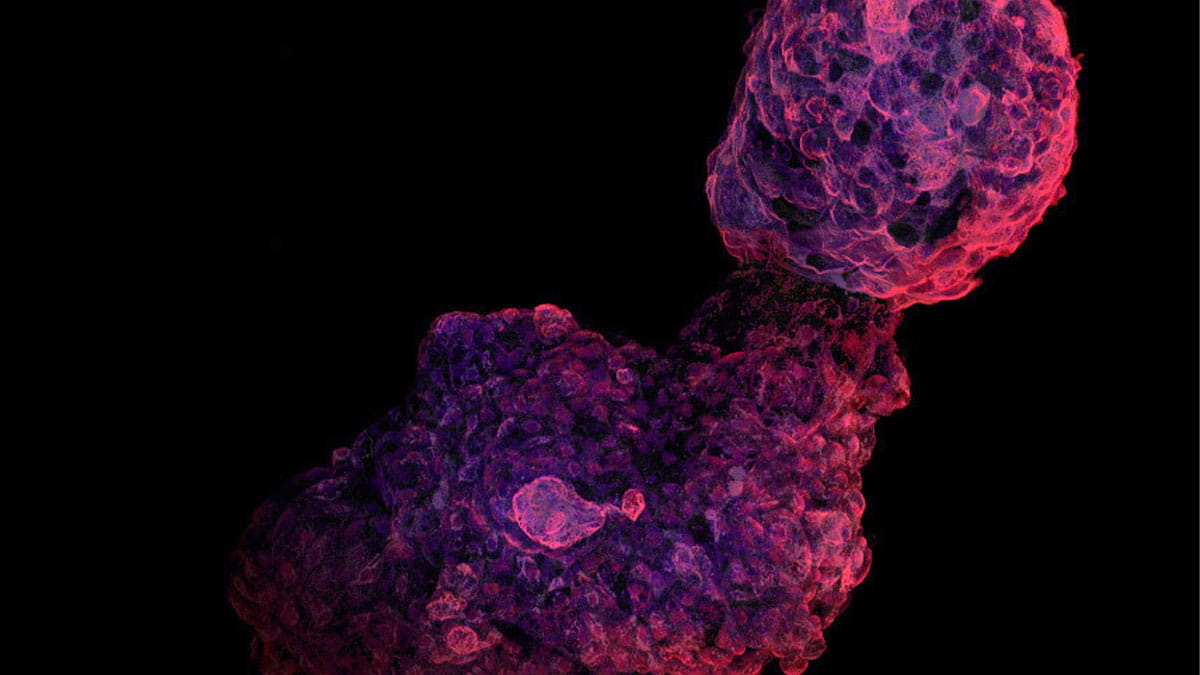New insight into neurodegeneration pathway offers hope for treatment of two most common forms of dementia

When it comes to understanding neurodegenerative diseases that lead to cognitive decline, the question of why a particular disease targets specific neuronal populations remains at the top of research inquiry. A new study by Hongjun "Harry" Fu, PhD, associate professor of Neuroscience at The Ohio State College of Medicine, offers new findings which could result in great hope for a large population of Americans affected by the two most common forms of dementia — frontotemporal lobar degeneration (FTLD) and Alzheimer’s disease (AD).
Using advanced techniques to study neurons from patients and mice, the team discovered a new way that neurons act in neurodegeneration by growing human neural organoids (what the team calls “mini brains”) that feature several cell types found in the brain.
One finding, noted in the study, which was just published in the journal Nature Communications, is that the protein GRAMD1B plays a significant role in how cholesterol and lipid stores are managed within neurons. This is an impactful finding as GRAMD1B is expressed in excitatory neurons and plays a role in regulating the clearance of abnormal tau protein, which contributes to the tau pathology found in FTLD and AD.
“When GRAMD1B levels are altered, it changes the balance of cholesterol, lipid stores and amount of modified tau in the cells, all of which are linked to brain diseases,” Dr. Fu says. “A deeper understanding of disease mechanisms of neurodegeneration will allow for novel development of therapeutic strategies.”
Excitatory neurons are vulnerable cell populations in FTLD and AD. The findings highlight the relationship between changes in GRAMD1B having a relevant role in three key factors: disrupting lipid homeostasis, blocking autophagy, which is a natural cellular process that allows the body to degrade unnecessary or damaged parts of a cell; and increasing CDK5R1, a gene which encodes an enzyme that is involved in tau pathology and neurodegenerative diseases.
We know that disruptions in lipid metabolism are linked to dementia, but further study of how modifiable risk factors, like the use of statins to lower cholesterol, can be adjusted to disrupt the development of dementia is needed. For now, researchers can learn from this study that patient-derived human neural organoids can serve as a complementary model to observable characteristics of an individual showing signs of imbalanced lipid metabolism and protein homeostasis.
“We’ve identified GRAMD1B as a player in the regulation of cellular health, lipid homeostasis and abnormal accumulation of the tau protein in neuronal populations,” Dr. Fu says. “Our work shows that GRAMD1B could be another potential therapeutic target against FTLD and AD.”
The work was supported by the BrightFocus Foundation’s Alzheimer's Disease Research program, the National Institute on Aging of the National Institutes of Health, The Ohio State University Chronic Brain Injury Discovery Theme pilot grant and The Ohio State University Neurological Research Institute seed grant.



